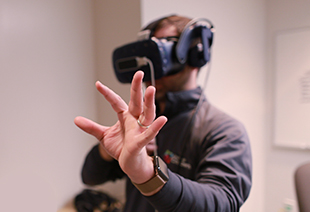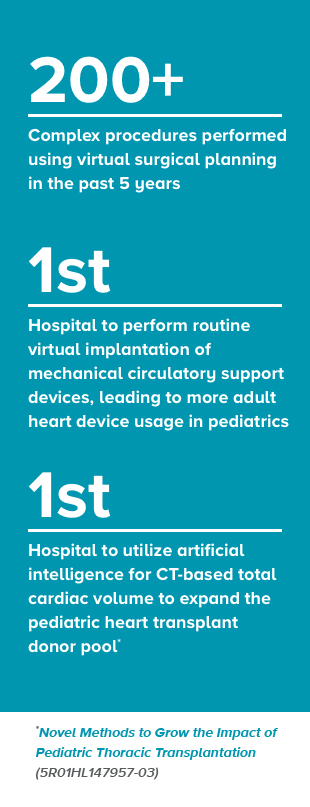Digital Innovations: Making the Impossible Possible

The latest in technology innovations are allowing a Cincinnati Children’s team to pre-plan surgeries previously thought unlikely, ease anxieties for families before surgery, and educate healthcare providers around the world.
Thanks to an investment from Dell Technologies, the medical center’s new Digital Experience Technologies lab keeps the organization at the forefront of digital innovations with augmented reality (AR), virtual reality (VR), gaming, app development, 3D modeling and 3D printing. Dell’s investment of more than $2 million included equipment with the advanced computing power needed for such work to occur.
The lab was born from work started several years ago by cardiothoracic surgeon David Morales, MD, and cardiologist Ryan Moore, MD, MSc, for the Cincinnati Children’s Heart Institute. That work has expanded to benefit the entire medical center in the following ways.
Patient and family education
The Heart Institute has used digital innovations to help educate families about their child’s procedure. “Thanks to Dell, older children and some parents will be able to go into the virtual space to see the planning of their child’s surgery,” says Morales, surgical director, Thoracic Transplantation and Mechanical Circulatory Support.
Collaboration with colleagues around the world
Multi-user collaboration is a hallmark of this lab. The Dell platform is helping to create the ability for surgeons located anywhere in the world to work on a case together in the virtual space. Such partnerships are critical for advancing medicine since some lesions are so rare a surgeon may only see a case a few times in their career. “We can import a patient’s 3D heart model into our virtual reality suite where multiple surgeons can interact directly with it and discover the optimal way to perform an individualized surgical repair,” says Moore, director, Heart Institute Digital Healthcare Innovation Program.
Virtual surgical planning
In the Heart Institute, surgeons are using the platform to plan complex cardiac surgeries. “This technology has allowed us to place intracorporeal mechanical circulatory support devices in patients who are well below the size of individuals in which we initially thought these devices could be placed,” Morales explains. Virtual surgical planning allows for precise measurements within the chest cavity and limitless trial-and-error simulations. “It’s sometimes thought that you can’t separate the right and left heart,” Morales says. “However, using this platform has helped us do biventricular repairs on several patients who were thought not to be candidates.”
The team is already working on goals for the future and expects new innovations and enhancements to continue as technology continues to rapidly advance.


